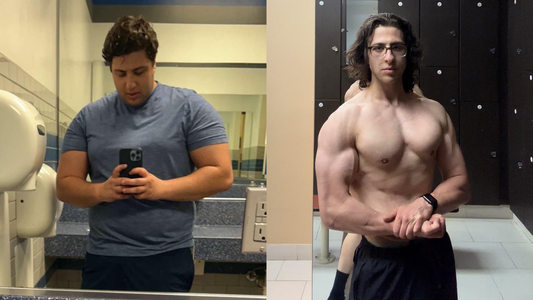

Exploring the Waist-to-Hip Ratio: What Does It Mean?
In recent years, more health professionals have referred to the waist-to-hip ratio as an important marker for health. Scientists who study how body weight and overall health impacts aging and the likelihood of individuals developing chronic conditions have found that waist-to-hip ratio is often a better measure than body-mass index (BMI).
At ZOZOFIT, we’ve known that the BMI has been outdated when compared to other methods of measuring health. The BMI doesn’t take into account factors like the amount of muscle versus fat someone has, which can make a difference in understanding the full picture of overall health.
The waist-to-hip ratio, compared to the BMI, quickly measures fat distribution. People with more abdominal fat may be at risk of developing certain chronic health conditions like Type II Diabetes and heart disease.
Calculating Your Waist-to-Hip Ratio
Calculating your waist-to-hip ratio is easy, making this an accessible option for anyone wanting a new method to capture their health progress.
All you need to do is measure the circumference of your waist and the circumference of your hips. Then, divide your waist measurement by your hip measurement.
If your waist measurement is 32 inches and your hip measurement is 37 inches, your waist-to-hip ratio would be 0.86.
If you are a ZOZOFIT user, this will be even easier. ZOZOFIT uses 3D body scanning technology to take accurate body measurements with your phone. Use the waist and hip measurements produced by the app in the equation above.
According to a report from the World Health Organization (WHO), a healthy waist-to-hip ratio is 0.85 or less for women and 0.9 or less for men. The WHO remarked that individuals whose waist-to-hip ratios are higher are at a greater risk for developing chronic conditions.
Comparing the WHO’s recommendations with our ratio above (0.86), we can see that a woman with a 0.86 hip-to-waist ratio would be at higher risk.
How Abdominal Fat Impacts Your Health
We all carry fat on our body in different ways, but we need to understand how fat in different places will affect us differently.
All fat can cause inflammation in the body and long-term inflammation leads to a variety of chronic problems. However, individuals with excess body fat should pay particular attention to abdominal body fat.
Fat in the abdomen is usually visceral fat, rather than subcutaneous fat. Since fat cells are active — just like other cells in the body — they are also producing hormones and substances that impact our overall health. Scientists note that visceral fat plays a larger role in our health because it is located around our organs and near the portal veins.
According to an article published by Harvard Medical School, “substances released by visceral fat, including free fatty acids, enter the portal vein and travel to the liver, where they can influence the production of blood lipids. Visceral fat is directly linked with higher total cholesterol and LDL (bad) cholesterol, lower HDL (good) cholesterol, and insulin resistance.”
Abdominal fat has long-term implications for overall health, but with an improved diet focused on holistic nutrition and fitness plan can counteract the impacts of this visceral fat.
How to Improve Your Waist-to-Hip Ratio
Improving your waist-to-hip ratio starts with making simple lifestyle changes.
While you can’t target exercise to decrease abdominal fat specifically, incorporating at least thirty minutes of exercise into your day can make a huge difference. Some forms of exercise, like cardiovascular exercise, will burn fat and fight against chronic inflammation. But you don’t need to start running to get moving.
There is a type of exercise out there for everyone, so try out some things and see what you like. You might love going on long walks while listening to an audiobook or hitting the free weights in the gym. It doesn’t matter what you do as long as you’re moving.
Improving your diet can also improve your overall health. Most fat loss happens in the kitchen. An easy start would be limiting processed foods and foods with high amounts of refined sugar. Focusing on whole, natural foods is also beneficial.
Why Health Tracking Measures Should Be Part of Your Fitness Routine
The waist-to-hip ratio is a good measure of health, but measuring once and not following up doesn’t do any good. As you continue on your fitness journey, keep track of changes in your ratio and other health improvements.
This is easy with the ZOZOFIT app, which allows you to compare scans to see how you’ve improved your fitness.

![zf-w-[168px] zf-h-[40px]](http://zozofit.com/cdn/shop/t/15/assets/logo-desktop.png?v=117713855448369080381753069598)




